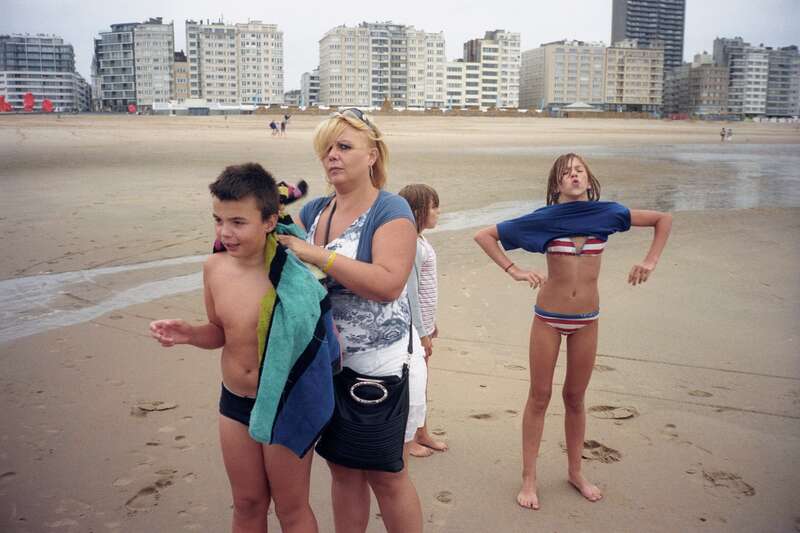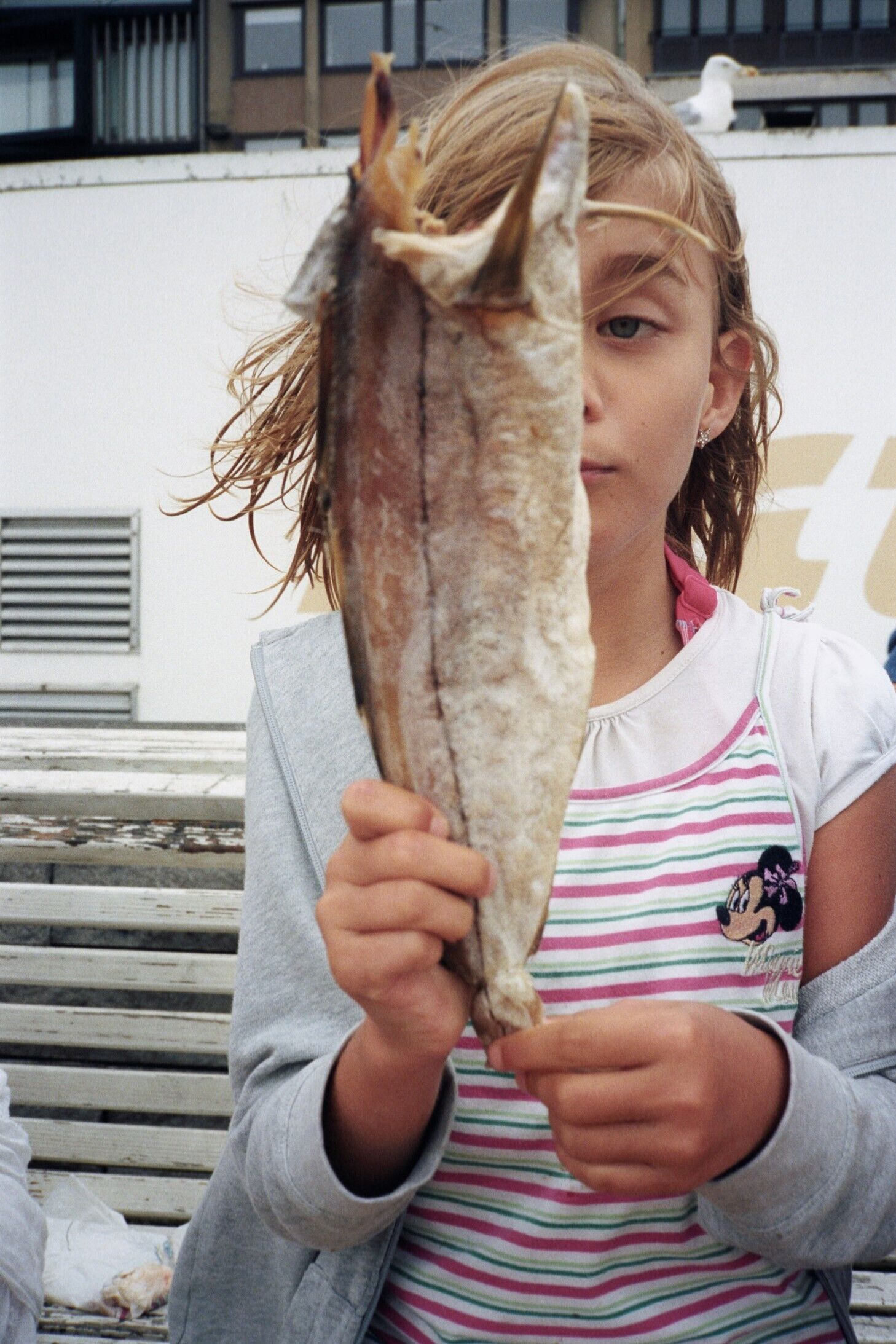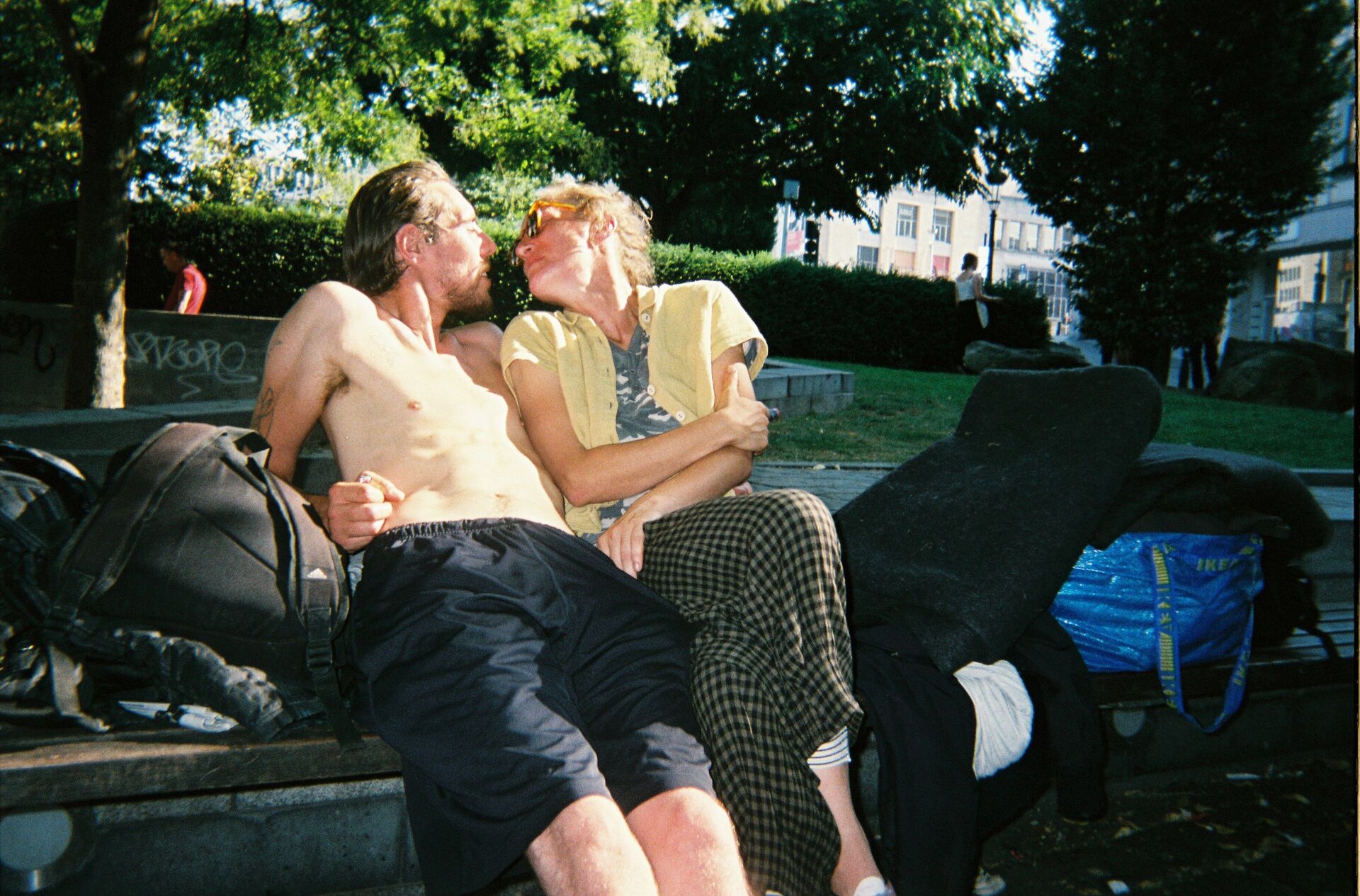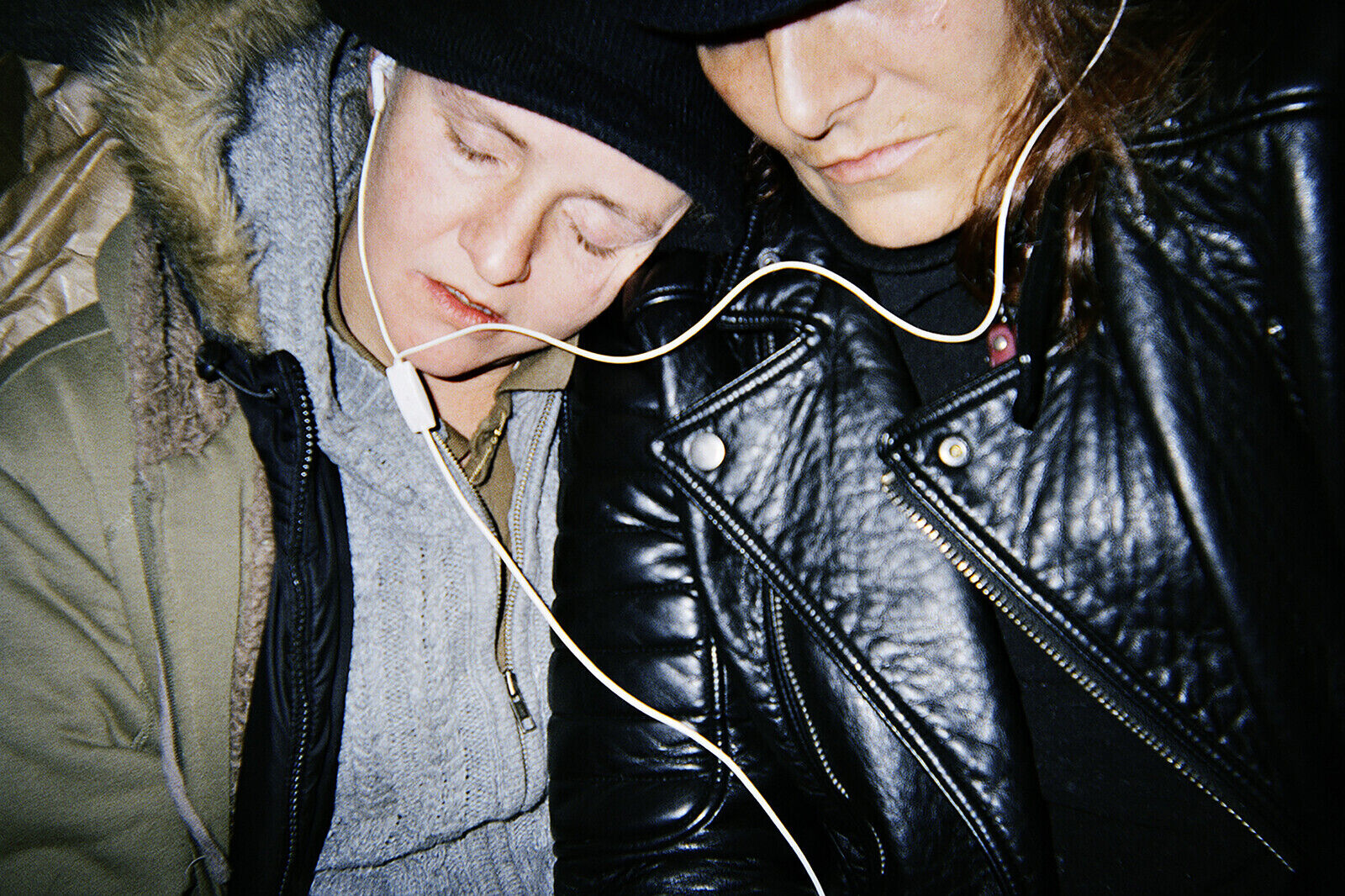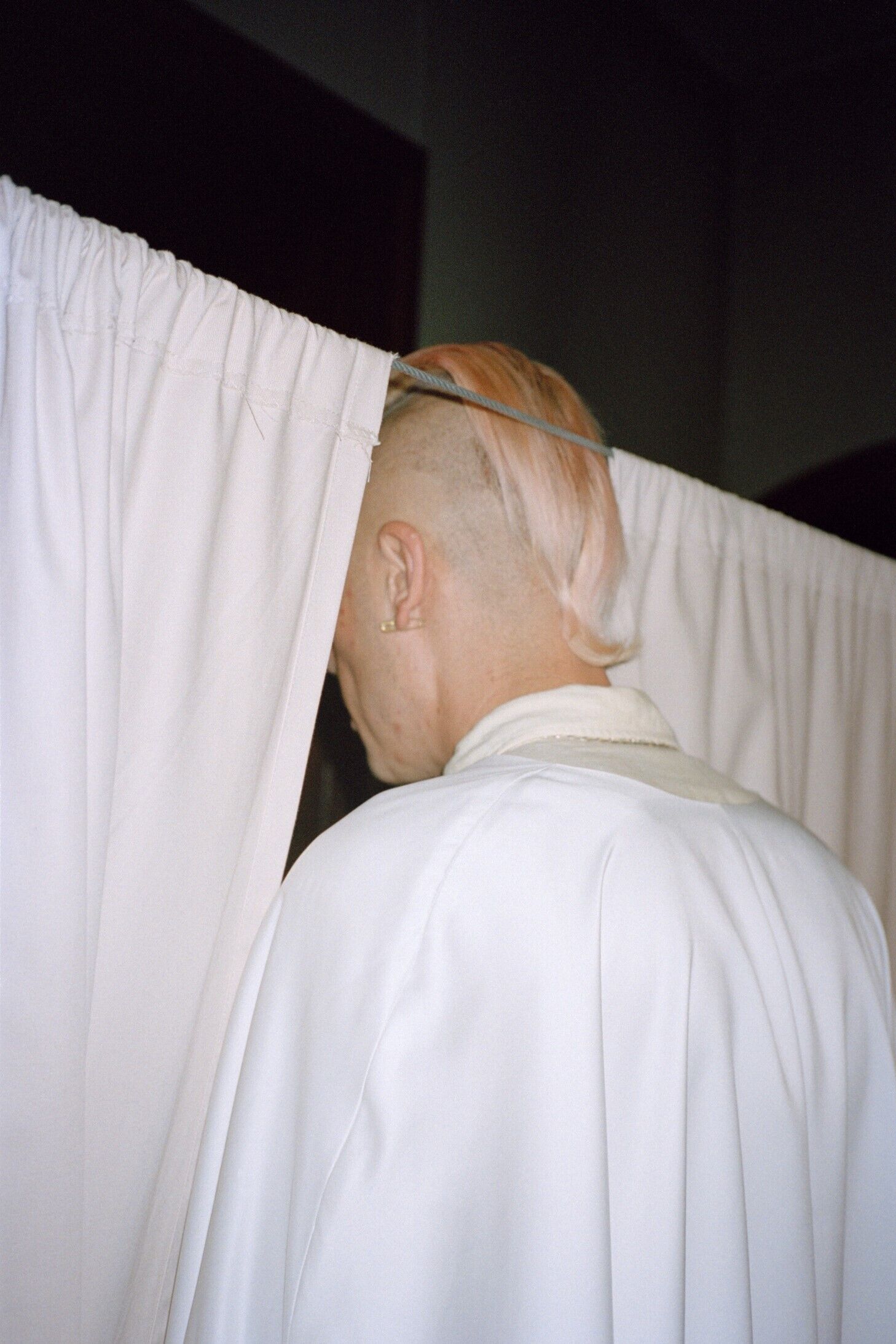Brussels photographer Vincen Beeckman has been very busy over the past twenty years. And yet, there’s little tangible evidence to show for it. The reason is simple: Vincen rarely makes purely physical constructions. What Vincen makes are things that happen.
Vincen builds sustainable connections. The real foundation of his work – maybe even of his life – is collaboration. The power lies in the organic growth between people and their environments, institutions and places that occurs within these connections.
He has long-term vision when it comes to projects, allowing them to grow symbiotically with the relationships they foster. To sustain the life of a project without losing himself in it, Vincen divides his days carefully into delimited meetings. He thus manages expectations and creates a sense of security and familiarity. Vincen is someone who comes and goes, but once he shows up, he never disappears entirely. He becomes part of your life.
I know this because I first met Vincen in 2012, when he came knocking on FOMU’s door with a pitch for a project on Belgium’s 200th anniversary – eighteen years early. It’s an anecdote that reveals exactly what he’s like as a maker and how he sets to work. The connection between us began in that moment.
Today, I’m working with Vincen in my curation for a major exhibition that will take place in the summer of 2023. By then, our collaboration will have spanned three years – an eternity for the type of curator I am. His unique approach to making and working means that the project is running on far longer than I’m used to. While this generates a special energy, it also results in frictions and dysfunctions. Talking about who Vincen is, and especially what his work is, without talking about the connections created by his work is pointless. Naturally, this applies to my connection with Vincen too, the story of which needs to be told. Along the way, everyone ends up being a part of his work, becomes a Vincen project, and I’m no exception.
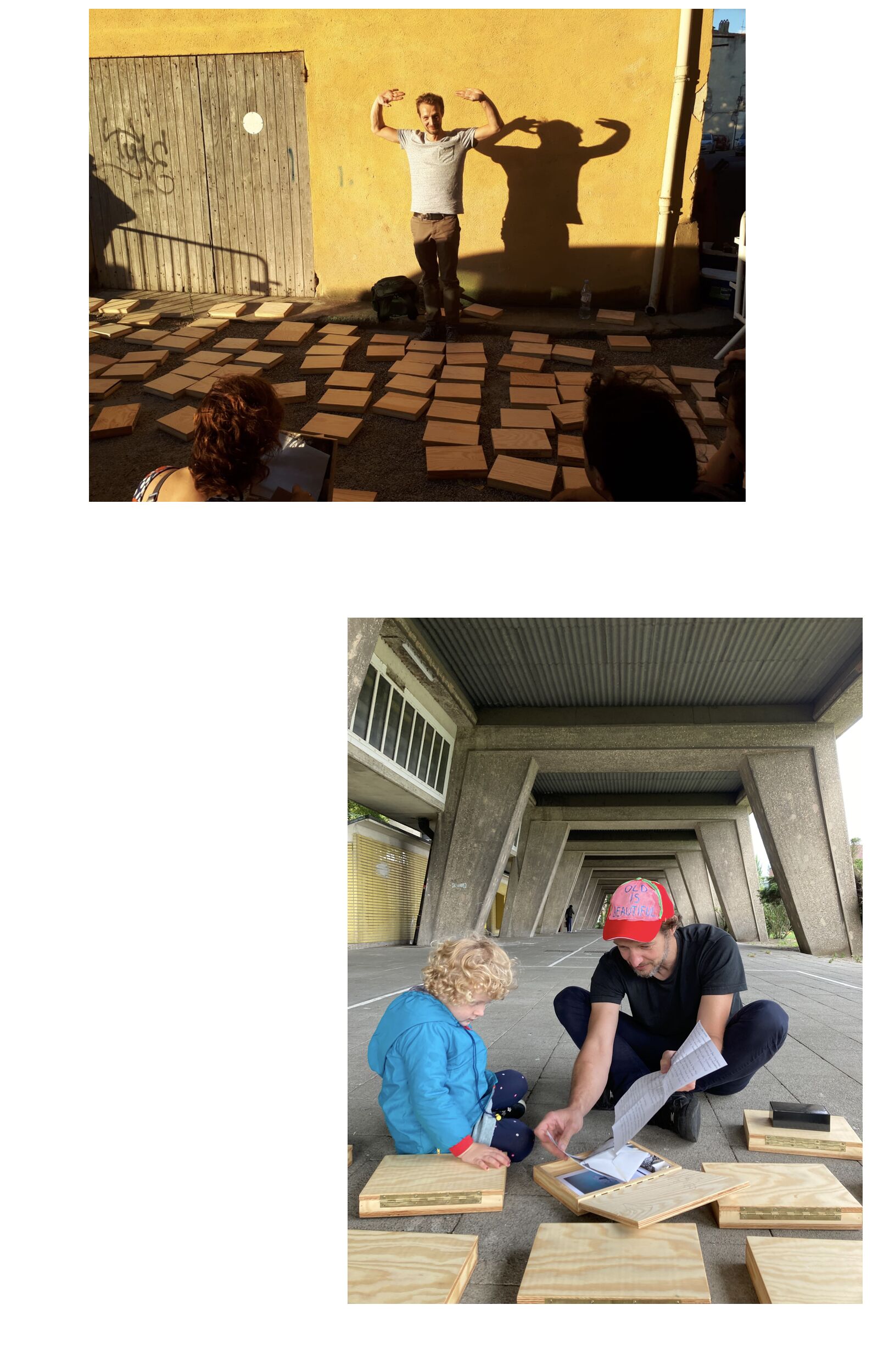
Vincen Beeckman at the Fusée de la Motographie in the streets of Arles during the opening week of Les Rencontres d'Arles, june 2018 (photographed by author) / Fusée de la Motographie at Kiel, Antwerp, September 2021 (photographed by author)
The anti-institute
In 2012, as Vincen is already pondering the 200th anniversary of his country, he’s also working as a culture worker for Recyclart. At the time, this socio-cultural centre is still located on the edge of the Marolles in Brussels, and has been Vincen’s place of work and play for some time. He embarks on many collaborations with the local people. As time goes by, his field of activity expands to the whole of Belgium. So Vincen sets a lot in motion while at Recyclart, but to really know what his projects are, you have to be there. Most of his initiatives are only brought to my attention in passing. Every time that happens, I get the feeling that I’ve missed out on something.
What I was actually present for, on a cool November evening in 2017, was the birth of the Fusée de la Motographie, perhaps Vincen’s most discussed work. It was preceded by an absurd story involving Vincen’s Musée de la Photographie de Bruxelles: a mobile exhibition of the work of a hundred Belgian photographers.
The exhibition space for each photographer is a simple wooden box for each participating maker to fill with their work as they see fit. The closed boxes are then placed randomly on the floor. The museum is now open. It is, therefore, a museum without a building, staff, or stakeholders, without policies or government support. The alternative museum is not an institution but a product of trust, of Vincen’s vision and his special bond with the hundred artists.
There’s another Musée de la Photographie, in Charleroi – a real institute with walls and all the other constituent parts and underlying motives – and it took offense at the project’s name. The reason: the Musée de la Photographie already exists in Belgium and fulfils its role as an institution in the proper manner. What followed was a lot of legal wrangling between lawyers until a thoroughly Belgian solution was reached – a rather absurd compromise. Vincen’s project was allowed to survive so long as its name was changed. The Fusée de la Motographie was launched at Recyclart. I was there along with almost the entire Belgian photography community.
The Fusée did the rounds, and many performances and perambulations later ended up in the FOMU collection, where it can be preserved under the best conditions. The last time I saw Fusée as a mobile exhibition was during a rainy September day in Kiel, Antwerp. Vincen was there, and also an enthusiastic Dutch person who had travelled all the way out to this Antwerp suburb to experience the performance. Otherwise, we noted, the visitors to the mobile museum were exclusively the residents of the tower blocks, and some passers-by.
I stood there wondering if the biggest challenge in curating Vincen’s work might not be that of keeping its spirit alive – if a project like the Fusée de la Motographie can really be preserved, or if its energy isn’t snuffed out once it is assigned a shelf. Does an anti-institute still have a soul once it’s been incorporated into an institution?
Meeting of parallel worlds
Vincen believes that photography connects people. This perspective led to a collaboration with the community of homeless people that live around Brussels Central Station. They were to become a fixture in Vincen’s calendar. He hands them disposable cameras without expecting anything in return: what they do with them is their business. Most of the cameras are never seen again. The ones that are returned to him, he develops in duplicate: one for the photographer who took them and one for Vincen’s own scrapbook. The scrapbook keeps growing and so too does what had started out as a gesture but soon became a project. Together with the photographers, Vincen installs a table in the station concourse. Over the course of a few days, the book Cracks takes shape. The homeless community is becoming a de facto collective of photographers, photo editors, and designers.
And later, also of booksellers. The photobook could only be purchased from a maker. I experienced this for myself when I wanted to buy a copy. Vincen gave me the phone number of Jackie, one of the community’s photographers and unifying figures. Together with Samyra Moumouh, the scenographer of the FOMU exhibition, I made my way to North Station, Brussels, carrying a plastic bag with some beers in it to help break the ice.
It felt like we were entering a parallel world. On any other day, Jackie would have been in her reality and we in ours, at most just passers-by in each other’s lives. The purchase of the book was, therefore, so much more than a transaction. It built a bridge between us, created a context in which Jackie and I could look into each other’s eyes and start a conversation. Jackie tells us about life as a homeless woman, how difficult it can be to find a toilet. We drink our beers and marvel at how many unique encounters have resulted from this book, what worthwhile relationships are forged, even if short-lived. The real achievement of the Cracks project is more than a book. It’s a process of re-humanisation and the encounters that result from it.
I am the institute
Next summer, when the exhibition opens, Vincen and I will have known each other for eleven years and worked together for three – three years in which he was present and absent but never disappeared. As a museum curator, I have been throwing myself into new projects every three or four months and filling the museum galleries with new exhibitions for over ten years. Without fail, it’s a linear process aimed straight at the deadline. Vincen and I, on the other hand, have been working at our own rhythm.
I have to confess that I sometimes feel lost in this long-term relationship with Vincen. A collaboration that lasts years creates completely different tensions, clashes, and dysfunctions. Not a linear movement but a fluctuating energy. It took me a while to realise that I seemed to have a problem with this way of curating: it was very much Vincen’s way, the art of letting projects take shape organically. I too had become a recurrent stumbling block in his diary.
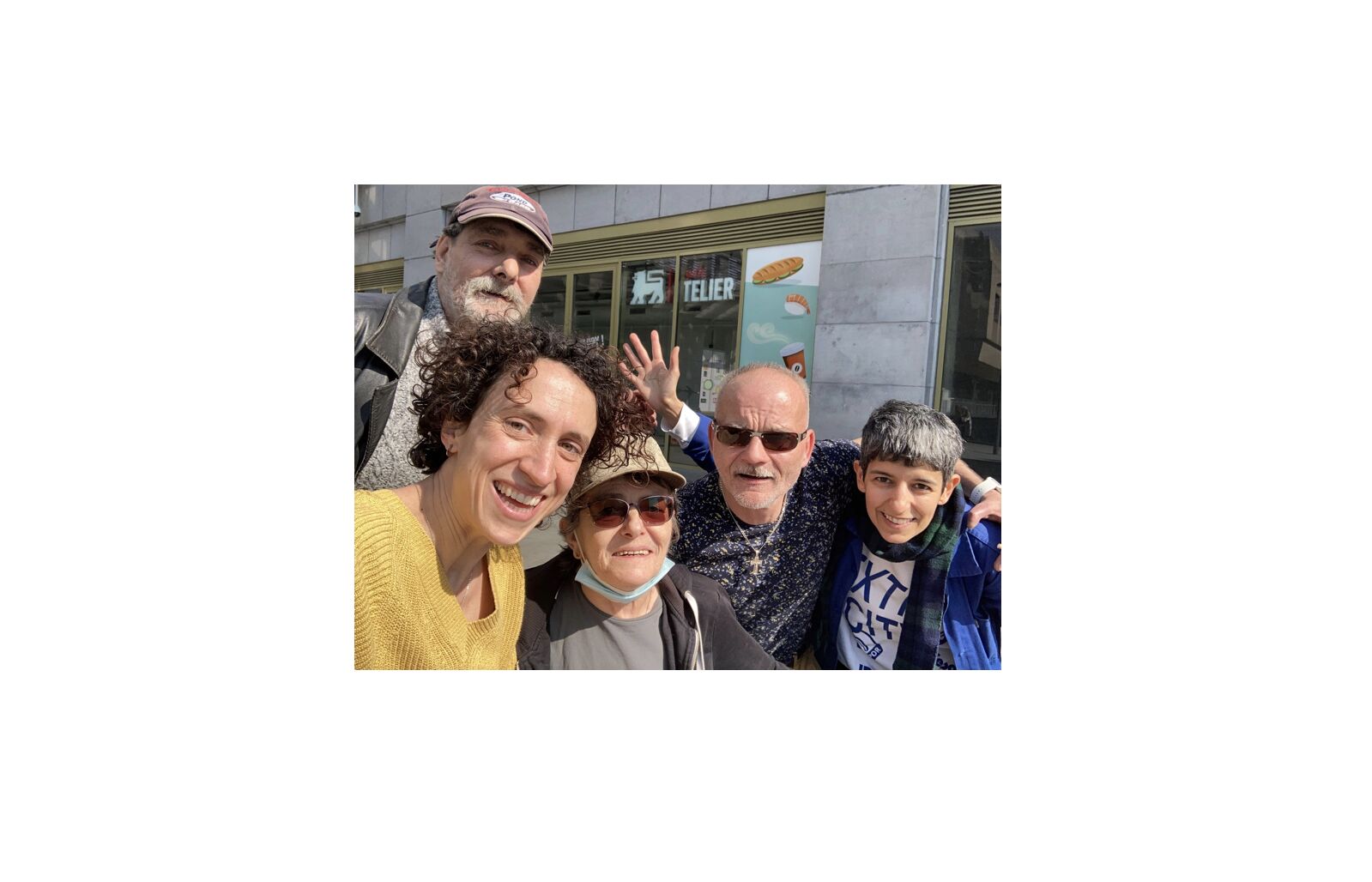
At Gare du Nord, Brussels, from left to right Franck, Rein, Jackie, unknown and Samyra Moumouh (photographed by author)
A little over a year ago, we spoke for the first time about a book to accompany the exhibition. We understood immediately that this could not or should not be a classic exhibition catalogue, but also not an overview in the form of a monograph. A concept rapidly materialised: Vincen and the British writer Diane Smyth would have a conversation once a month for a full year. This would result in a sort of journal that would provide me with snippets of texts and images that I would work with in my role as curator of the book space. We thought that it would be easy to convince a publisher of the value of our project, but it didn’t turn out that way. I learned later from one of the publishers with whom we spoke that our reputation as a museum had worked against us: nobody expects a museum to do something that out of the ordinary, and because they couldn’t categorise it, the book was of no interest to them.
So, Vincen’s working method brings into sharp focus the method of the curator (and, for that matter, the museum). The more I challenge myself to cast off my familiar working methods, the more I realise that I am an extension of the institute that I represent. His projects are difficult to capture in one summarising image. As a curator, you work very hard to be the link between audience and artist.
The full power of the connection processes Vincen creates cannot be captured in an exhibition that only shows the results of the work. This observation is troubling to me as an exhibition-maker, and challenges me to confront my own dogmas. For example, I have always considered the goals of reaching, challenging, and moving the public as unassailable. It’s liberating to see that what takes place outside the exhibition space is also fundamental to the show. We’re not inviting members of the public to stand in judgement over things they cannot know. One can be tempted to view the public as peripheral to the main event, but then there’s the catch-22: why put on an exhibition at all?
The answer lies at the heart of Vincen’s practice, putting process above result. Since early 2020, Vincen has been taking the train regularly to Antwerp. FOMU invited him to establish an Antwerp connection, which we consider necessary to the showing of his work. He made inroads with Studio Palermo, a group of friends of which he’s now a part. A space in the exhibition has been reserved for Studio Palermo, and Samyra Moumouh, the exhibition’s scenographer, is closely involved with the group. For everyone connected with the show, 22 June 2023 is a fixed date in the calendar. That evening, all the ‘projects’ exhibited will arrive in Antwerp from Brussels, Mons, Charleroi, and Lille, and they’ll all leave their mark on the show. I will stick my neck out and say that the book will also be there, albeit made with fewer resources and not as it was originally conceived.
As an exhibition-maker, I see this event as an exceptional opportunity to take risks. I want to directly address and actively involve the public. I want visitors to feel like they’re more than visitors – that they’re part of the bigger picture; that it’s safe to park their reservations at the door; that, for a short while, Vincen is also a part of their lives. I want the museum to do what it can do: be a place that breeds connections – in our minds, in our hearts, and most of all, between people.
In the months to come, it will be my job to take to heart Vincen’s invitation to make the project fully my own, to invest the process with value and pleasure, and to divest it of the pressure of results. After all, this is what his practice has repeatedly shown: that this way carries the greatest hope for connection.
This text came about through a short but intense shared writing process with Lien Vanden Bossche, who helped me untangle some crucial knots and shed light on the bigger picture.
It was originally published in our printed issue Trigger #4: Together. This issue is guest-edited by Susan Meiselas and explores collaborative practices in photography and beyond. Sixteen contributions engage with strategies of co-creation that stretch notions of authorship and ownership, breaking through existing heteronormative, state-owned, or hyper-individual categories.
This essay was written in the autumn of 2022. Meanwhile, the exhibition has been named Ping Pong and will run from June 24th to October 8th, 2023. Currently, the finishing touches are being made to the accompanying publication Pong Ping. Through personal conversations, the book offers a deeper understanding of Vincen's creative process. It takes you on a visual journey through four of Vincen's projects: Cracks, Les Intimes, La Devinière, and Studio Palermo. It will be available through the FOMU webshop from June 24, 2023.
